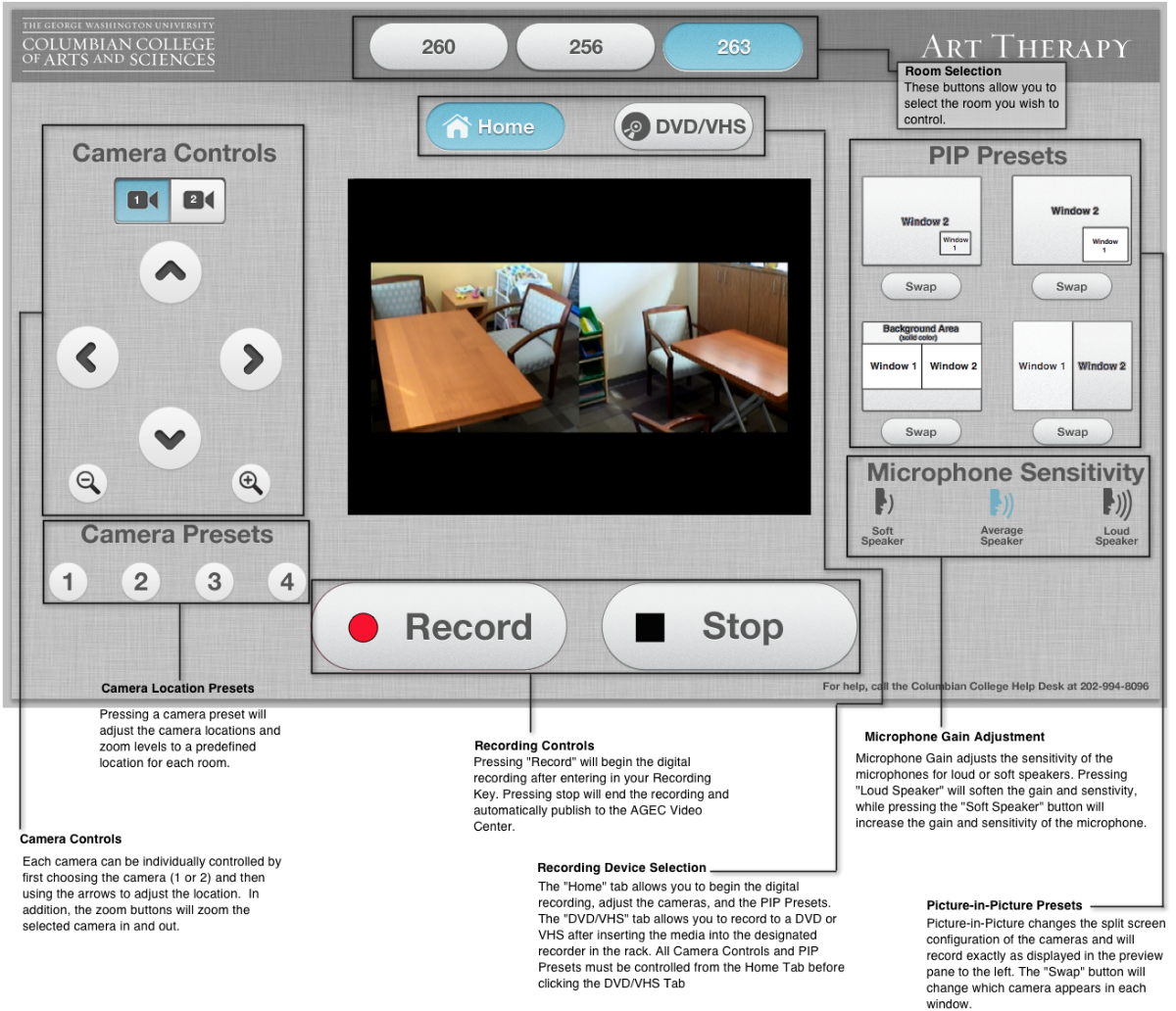Videoconferencing brings art therapy into focus

A LifeSize system, designed for long-range use, proves to be the right recording tool for sessions at George Washington University.
George Washington University has a robust art therapy training program, but it needed a better way to record and study the individual art therapy sessions, in which every brush stroke, color choice and design element can be a clue into a patient’s mind.
At GW’s Art Therapy Program, students learn by observing clients create art projects as part of the client's therapy. Sessions are recorded for later examination or observed in real time by licensed art therapists and university professors. But until recently, GW relied on older recording and video management technology that came with a lot of drawbacks.
Randall Shore, information systems analyst for the Columbian College Office of Technology Services at GW said the university initially set up cameras and computers in each of the six counseling rooms, tying them to Apple QuickTime streaming media servers. That setup required the IT staff to service each system individually and created problems for students and professors who wanted to watch archived sessions.
"Everything was recorded to DVDs," Shore said. "You would have DVDs go missing. They would be labeled wrong or not be labeled at all. And they were all kept in the same place, which meant there was no access control over the information."
In searching for a better solution, the university wanted to satisfy the goals of the three user constituencies, Shore said. First, the IT staff it wanted a system that could tie individual counseling rooms into the existing enterprise IT infrastructure. Second, the school wanted to keep its Crestron AV Controllers because they provided a simple interface for students. Third, professors wanted the ability to stream sessions live if needed, easily sort the recorded data and analyze therapy sessions as soon as they were concluded without having to wait for the files to be transcoded, a feature that few dedicated recording programs offered.
A unique use of videoconferencing equipment provided a solution. LifeSize, a division of Logitech, builds “very high-performance teleconferencing solutions, but also ones that are very simple for people to use," said Michael Helmbrecht, LifeSize’s vice president of product development.
The LifeSize Express 220 is able to support both live-streaming and recording for later use. The unit has two fully interactive channels and can record at 30 frames per second in 1080p resolution or 60 fps at 720p resolution. Both resolutions can show the detail in the art being created during therapy. Sessions can be streamed live to multiple viewers, or stored on a server for later use with full access controls.
At GW, the IT staff used LifeSize technology for six of the counseling rooms, each of which are equipped with two small, unobtrusive cameras. The actual Express220 units are kept in a separate control room along with the server that records, stores and manages the data coming from all the units. The university is thus able to record six therapy sessions at the same time, a frequent occurrence according to Shore.
The sessions are now both secure and easy to record. Shore said that students simply enter their identification numbers into the computer to start a session. All of the security — in terms of who can view the video and when — is automatically assigned so that it's practically invisible to students, who can then concentrate on helping their clients and learning to become better therapists. Nobody is required to be inside the control room during a session.
"If a session is scheduled to begin at 7 [o’clock], the student can come into the control room at 6:58, enter their ID, set up the cameras how they want, and begin on time working with their client with no delay," Shore said.
The system offers different presets for camera angles, which can be quickly adjusted beforehand, or changed in real time by a professor or therapist inside the control room. Some presets have the cameras focused directly on the student and client so that professors can monitor body language; others focus the cameras on the table and the art supplies the clients work with. The high-resolution video that the LifeSize units record means that every brush stroke or subtle shift in body language can be later examined by professors to help train students.
Depending on how it is configured, a LifeSize Express 220 costs about $7,000. The software to set up a server for advanced manipulation and recording of the data feeds runs $10,000, but can support multiple 220s.
At GW, the experience was so good that the IT staff is installing more LifeSize units in classrooms beyond the Art Therapy program. Shore said the university currently has 36 units combined at its Alexandria, Va., campus and the main campus in Washington, D.C. And although the number of units has increased, calls for help and support have dropped because students and professors can easily run the sessions on their own.
"With the old system I would get eight to 10 calls for support a month," Shore said. "Today, on a bad month it might be two calls." He added that both students and teachers are always positive when asked about the new system. The university plans to add more LifeSize units as needed, Shore said, and may even market this efficient and rewarding teaching tool to potential students.






